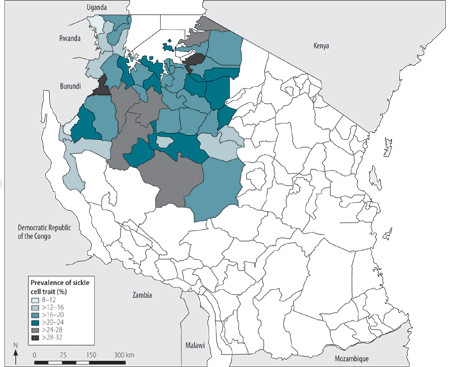WHO Features Cincinnati Children’s Sickle Cell Research in Tanzania
Research By: Luke Smart, MD | Russell Ware, MD
Post Date: December 10, 2020 | Publish Date: December 2020

With the United Republic of Tanzania lacking a robust sickle cell disease surveillance program, experts at Cincinnati Children’s worked with scientists there to use blood samples gathered for HIV prevention work to help identify areas that most urgently need distribution of hydroxyurea treatments.
Details appear in the December issue of the World Health Organization Bulletin. Collaborators from Cincinnati Children’s included Luke Smart, MD, and Russell Ware, MD, PhD.
“We estimate that the annual number of live births with sickle cell disease is at least twice that previously thought to occur in the United Republic of Tanzania; we project that over 10,000 births among just 40% of the Tanzanian population are affected annually, compared with previous estimates of 8,655 and 11,022 annually affected births for the whole country,” the surveillance study reports.
The report calls for an across-the-board acceleration of sickle cell diagnosis and treatment efforts.
“Our data reinforce the urgent need to enhance sickle cell diagnostic services, the obligatory first step in the cascade of care for this neglected patient population. The sickle cell clinic at Bugando Medical Centre has approximately 600 patients currently enrolled in care, some of whom travel from neighbouring regions. However, we estimate that 1730 infants are born with sickle cell disease in Mwanza region alone each year.”
| Original title: | Surveillance for sickle cell disease, United Republic of Tanzania |
| Published in: | WHO Bulletin |
| Publish date: | December 2020 |
Research By








